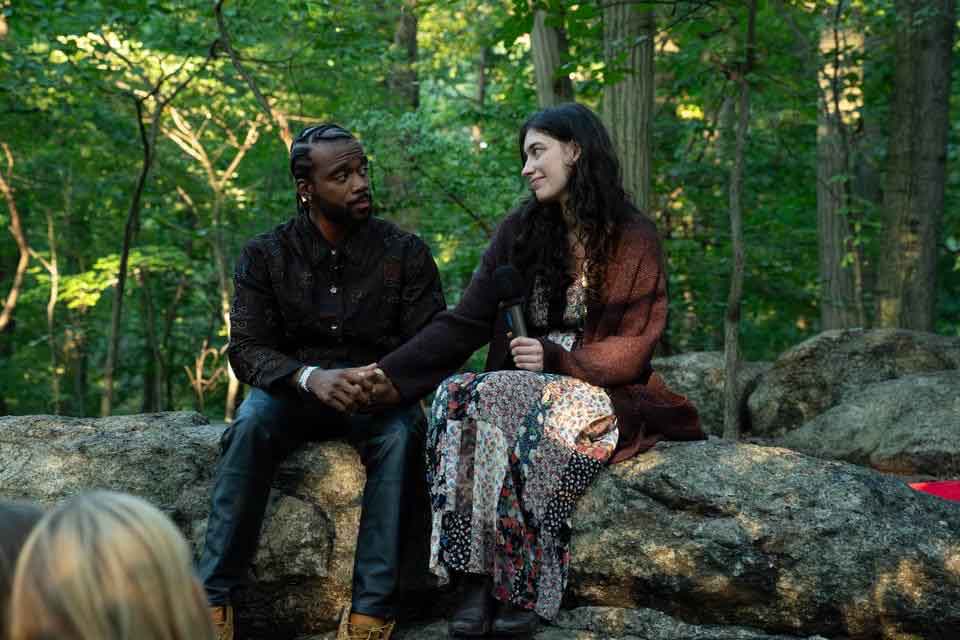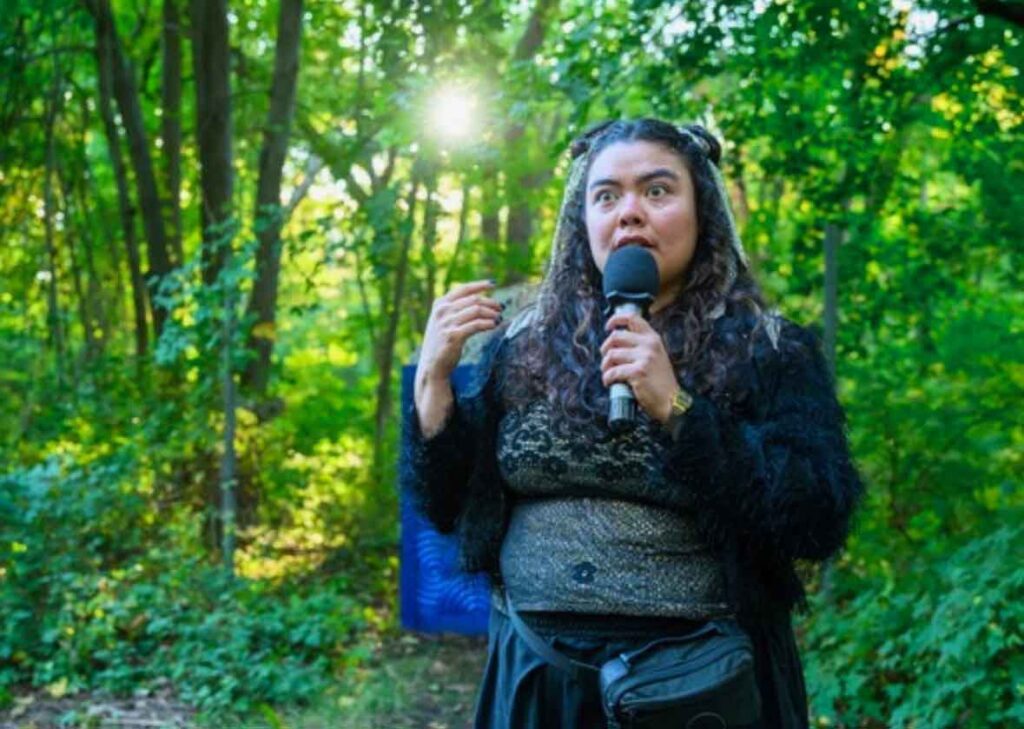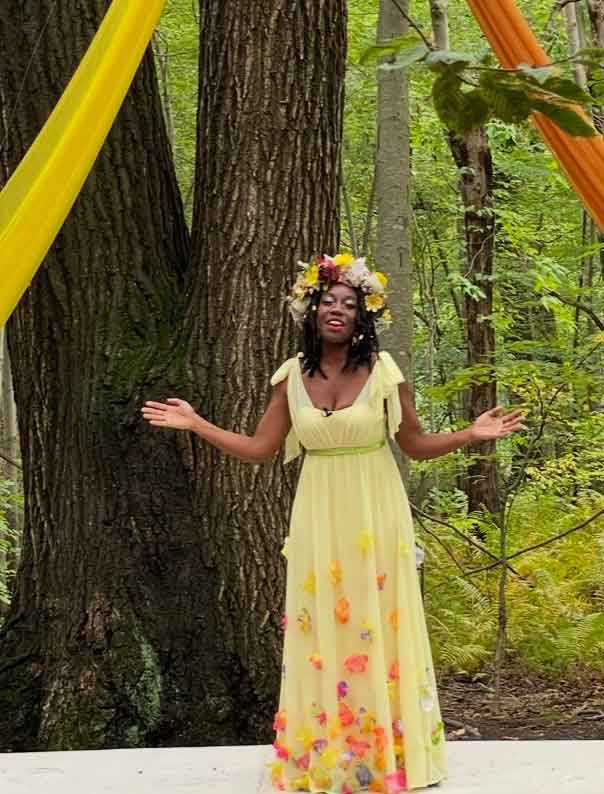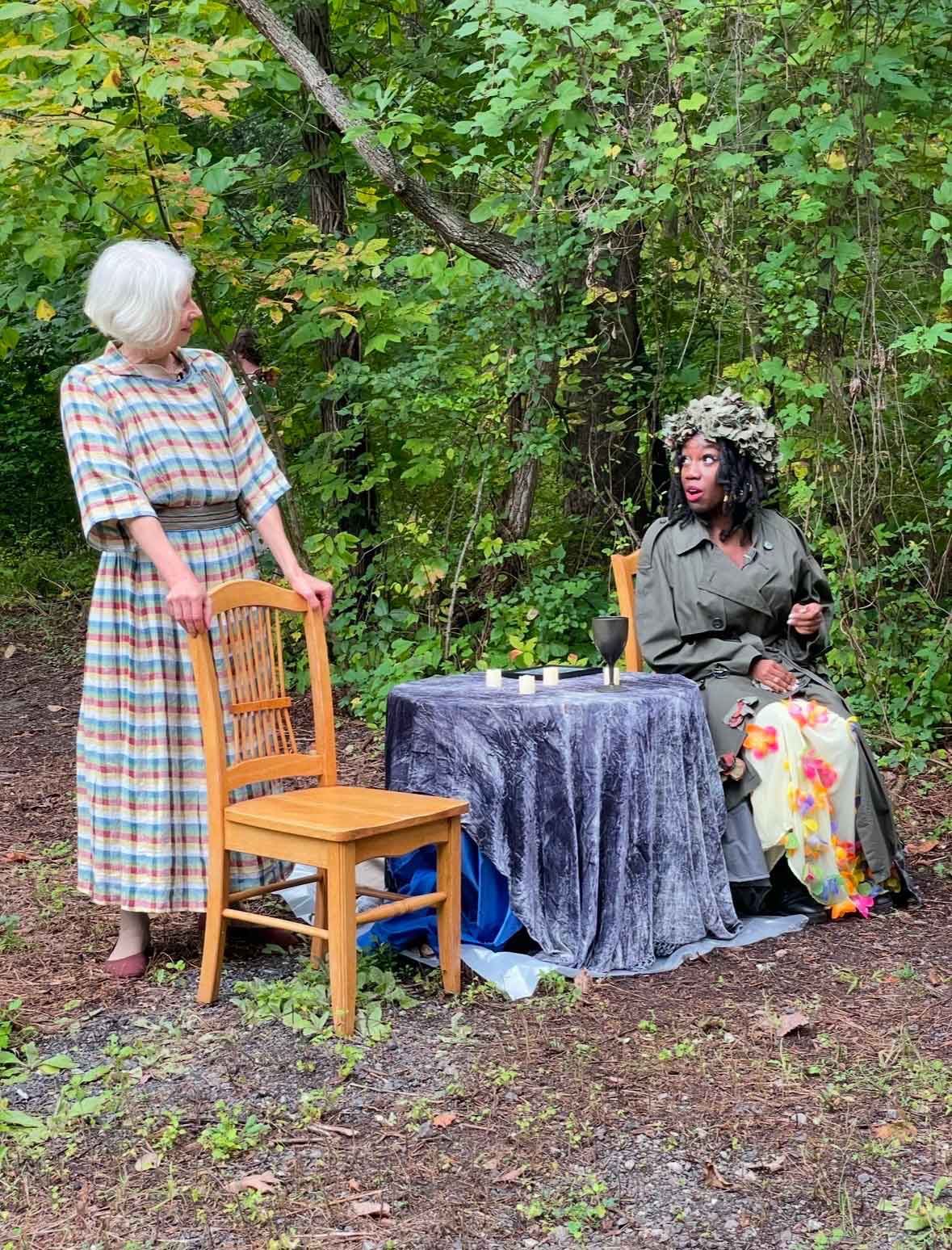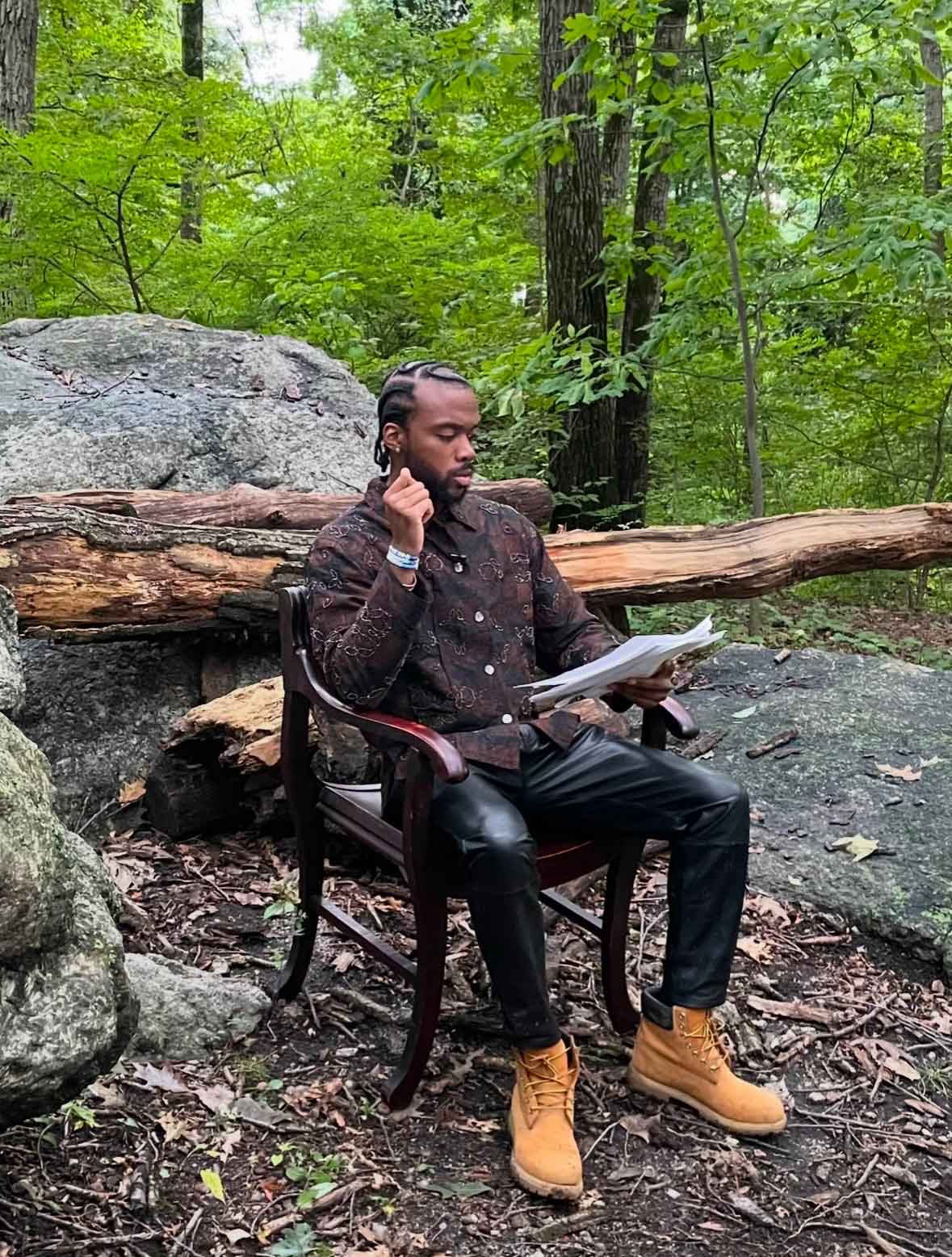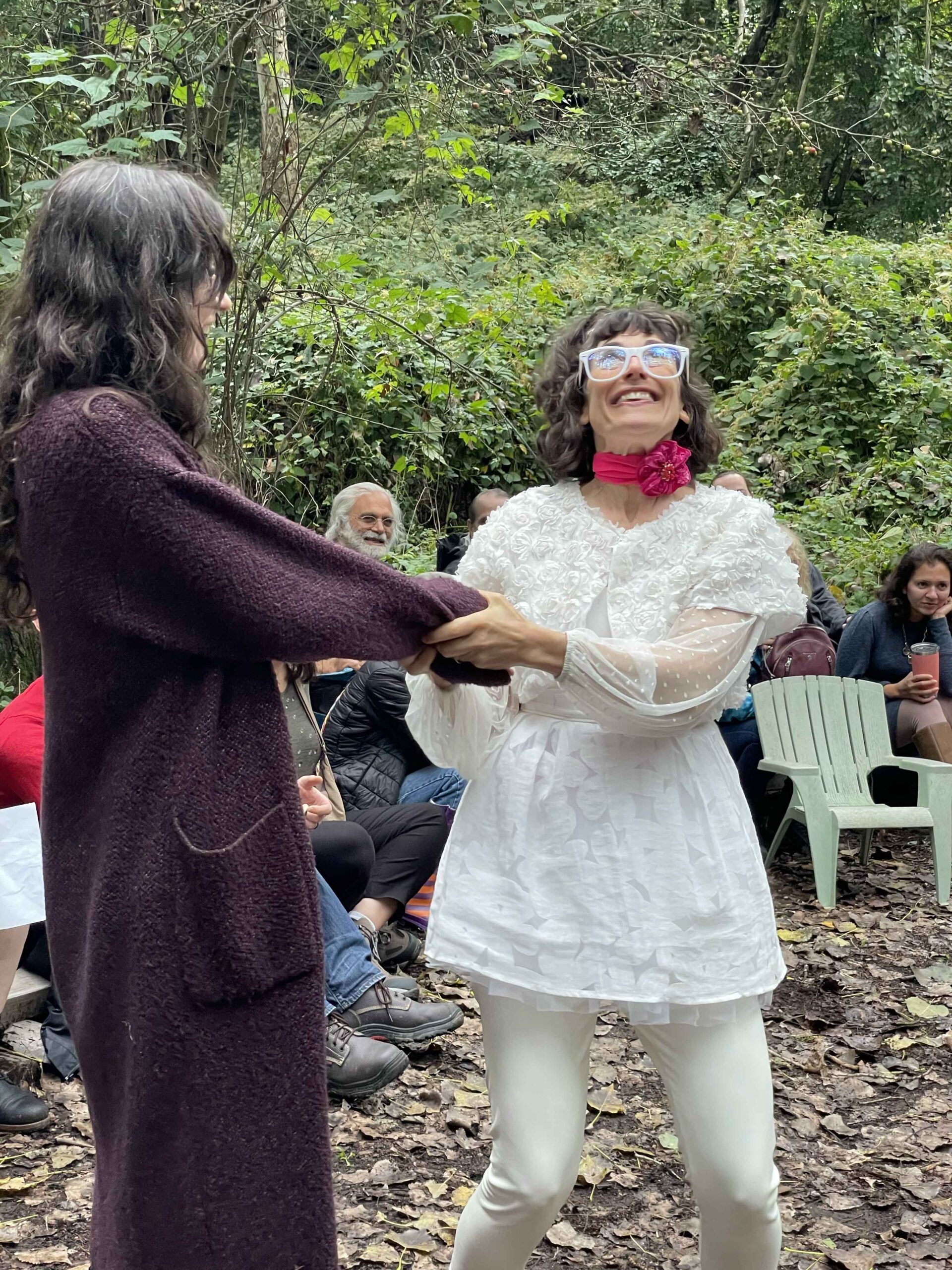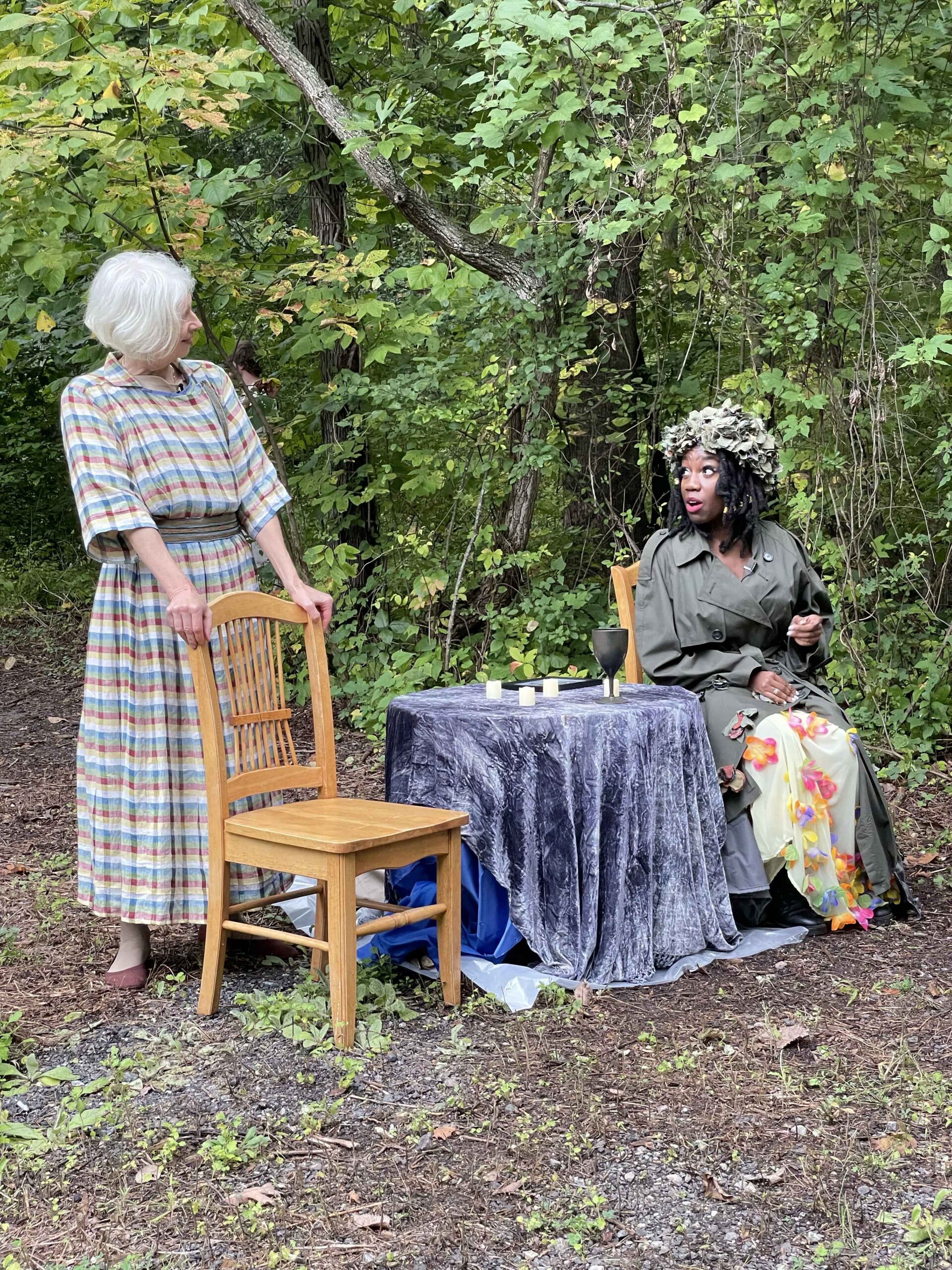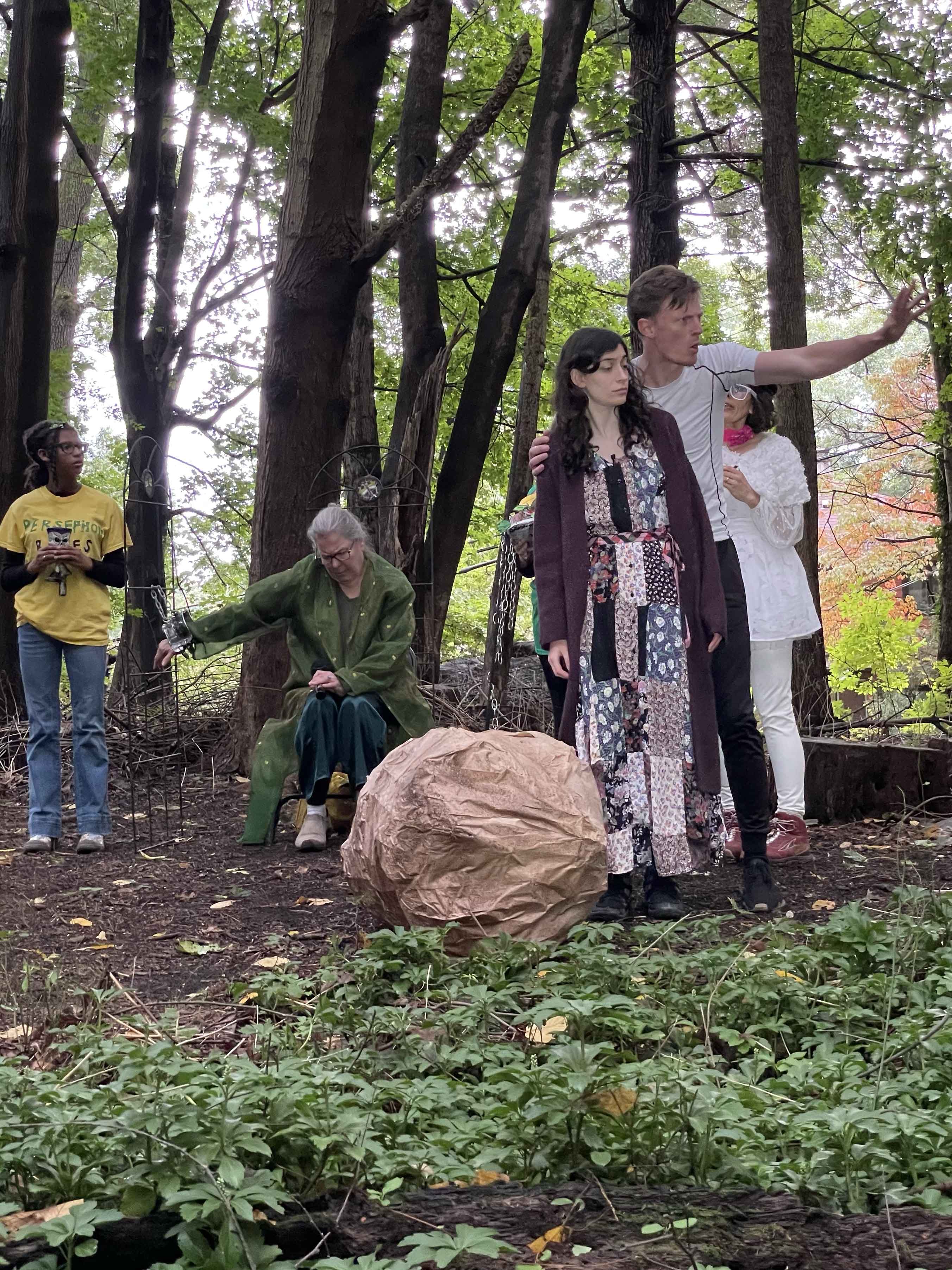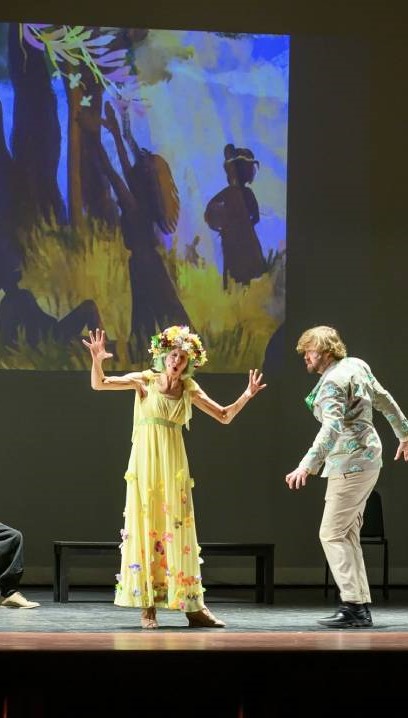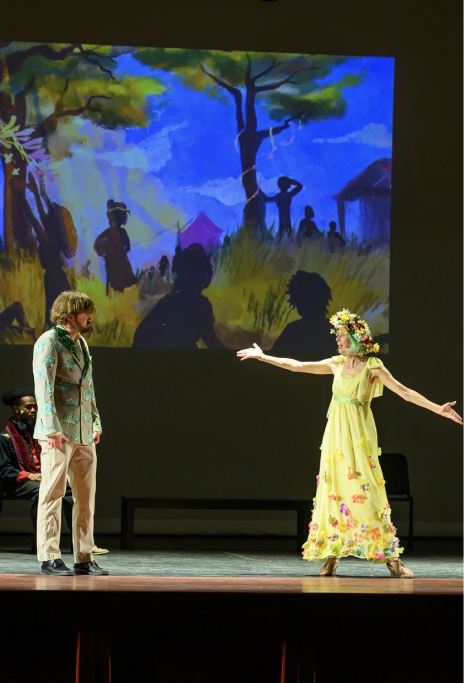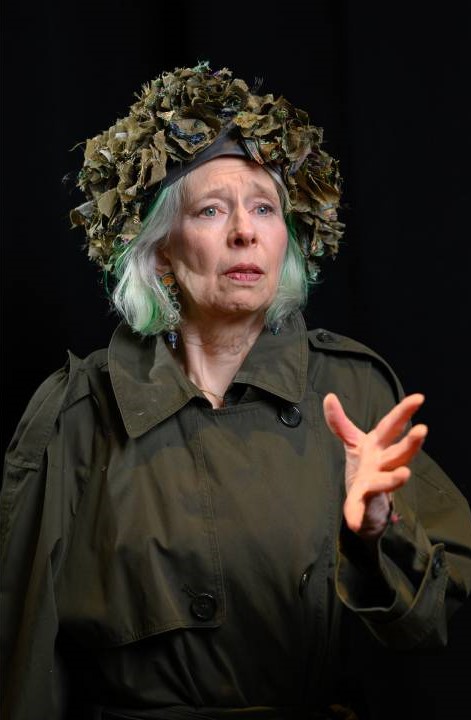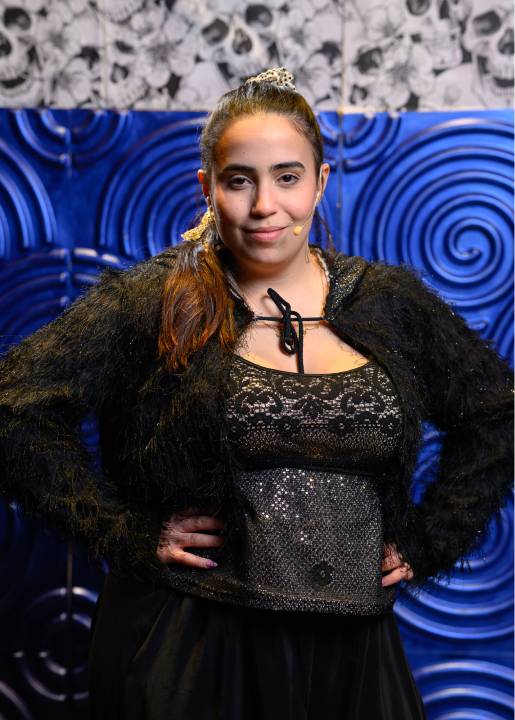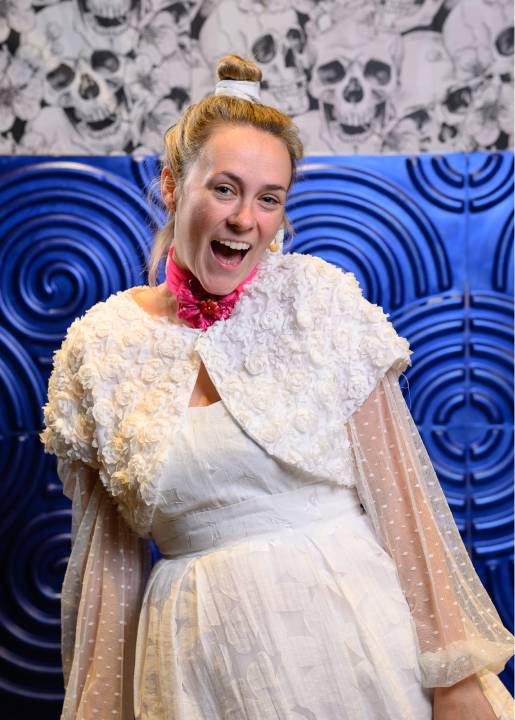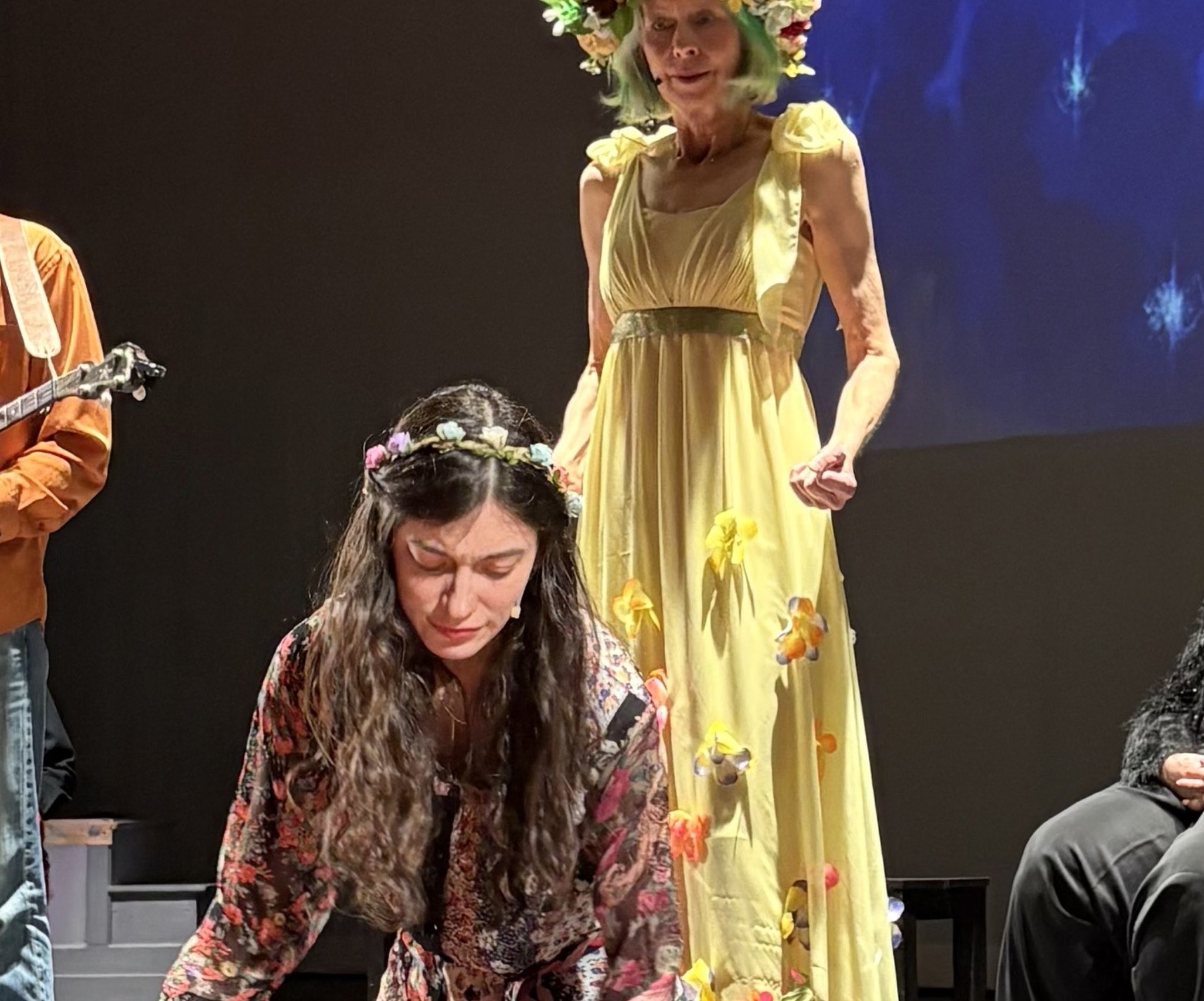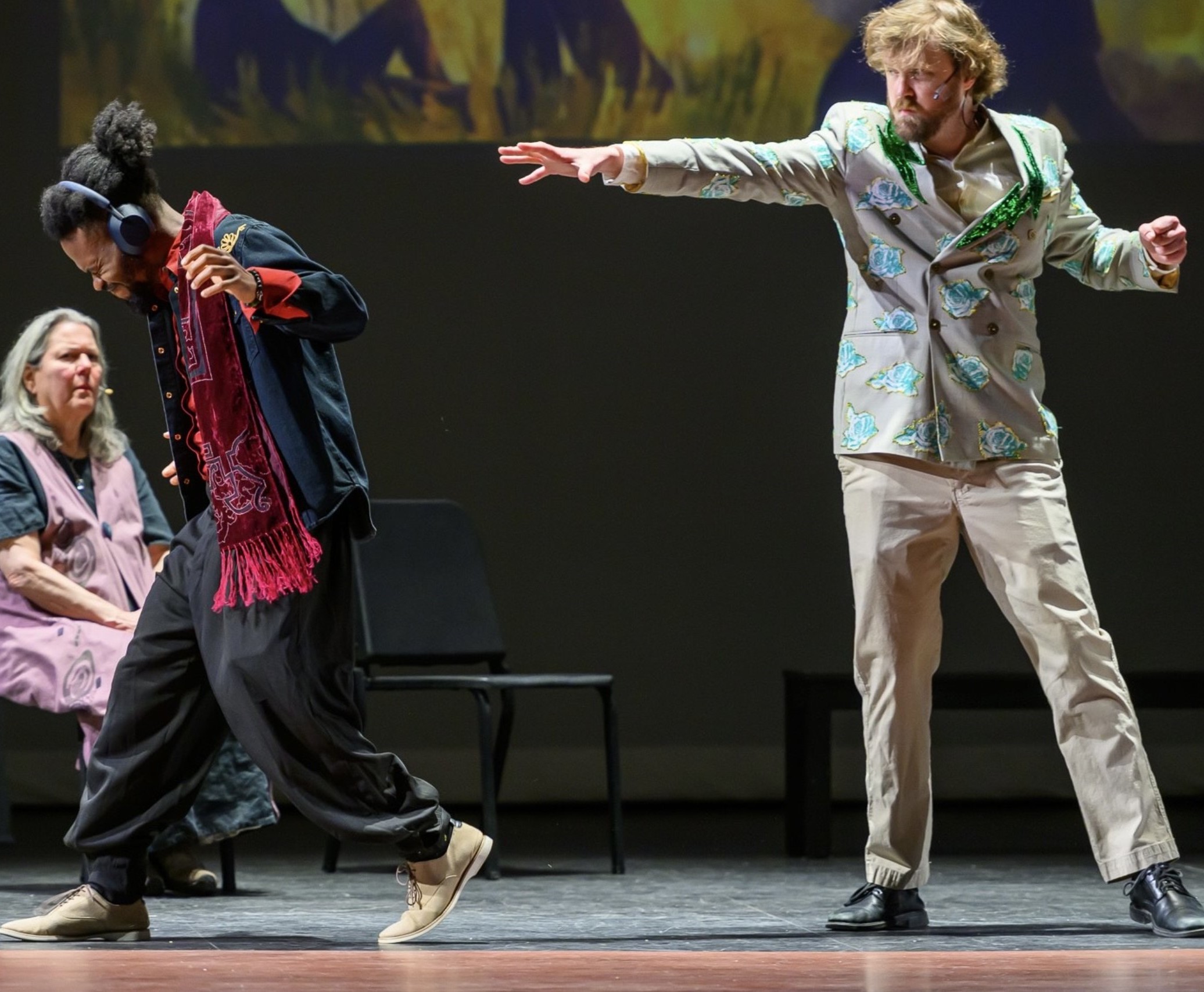
Persephone Study Guide
Welcome To Persephone
Welcome to the study guide for Persephone, a bold and vibrant new musical that breathes modern life into one of the most enduring myths of ancient Greece. This contemporary retelling of the classic story explores themes of family, self-discovery, and the search for a better life—timeless struggles that resonate with audiences of all ages.
At the heart of Persephone is a reimagined version of the beloved myth, where Persephone is no longer just a goddess of the seasons, but a pop star adored by millions. Despite her fame, she feels trapped by her overprotective mother, Demeter, a loving but controlling stage mom who wants to keep her daughter safe from the pressures of the world. Persephone yearns for independence, for the freedom to define her own path, and to become the “Queen of her own heart.”
When Persephone meets Hades, the enigmatic and passionate king of the Underworld, their encounter sparks a conflict that threatens not only their lives but the balance of the entire world. As the stakes rise, Persephone must confront her deepest desires, her family’s expectations, and the forces that pull her between two very different worlds.
Directed by Peter Royston, with a script by Peter and William Royston, Persephone is brought to life through the electrifying music and songs of Emma Freeman. This study guide is designed to help you explore the rich themes, characters, and music of this exhilarating new musical as you delve deeper into its modern take on a story that has captivated audiences for centuries.
Get ready to discover a world where ancient myth meets modern music, and where the journey toward self-empowerment is a song that will stay with you long after the curtain falls.
THE FIRST MYTH OF PERSEPHONE
In Greek mythology, Persephone was the daughter of Demeter, the goddess of the harvest, and Zeus, the king of the gods. Persephone grew up to be a beautiful young goddess, beloved by all, but her life would take a dramatic turn one fateful day.
While she was picking flowers in a field, the earth suddenly opened up, and Hades, the god of the Underworld, emerged in his chariot. Enchanted by her beauty, he abducted Persephone and took her to his dark realm to be his queen. Persephone was devastated, and as she was taken away, she cried out for help, but no one could hear her.
Demeter, devastated by the loss of her daughter, searched the earth in vain for Persephone. In her grief, she caused the earth to wither, and crops began to die. The world fell into a cold, barren winter. Meanwhile, in the Underworld, Persephone was initially miserable, but over time, she grew accustomed to her new life and, despite her sorrow, became Hades’ queen.
Demeter, desperate to find a way to bring her daughter back, pleaded with Zeus to intervene. Zeus, seeing the suffering of the world, agreed to help. He sent Hermes to the Underworld to retrieve Persephone, and after a confrontation with Hades, it was decided that Persephone would return to the surface. However, before she left, Hades tricked her into eating six pomegranate seeds, which bound her to the Underworld.
The deal struck was that Persephone would spend six months of the year with Hades in the Underworld, and the other six months with her mother, Demeter, on Earth. During the months Persephone was with Demeter, the earth flourished and life thrived. When Persephone was in the Underworld, the earth fell into winter, with the plants and crops dying.
Thus, the cycle of the seasons was born, as Persephone’s dual existence became a symbol of life and death, renewal and decay, and the eternal connection between the mortal and divine worlds.
MEET THE Creators
Emma Freeman (Music & Lyrics, original Persephone)
Emma Freeman is a Westchester-based actor, singer, and songwriter. Previously with Anywhere Theatre Company, she composed music and played the role of Persephone in “Persephone: A New Musical Experience,” and played Mina in “Dracula and the Theatre of Doom.” Other performance credits include: Finn (original folk musical “Oceanborn”), Katharine (“Love’s Labour’s Lost”), Juliet (“Romeo and Juliet”), Olive (“The 25th… Spelling Bee”), Nina (“The Seagull”), Claire Clairmont/Elizabeth (Frankenstein adaptation “Monster”). Her original music, including her debut singer-songwriter EP Proper Words, can be heard on all major platforms. She is part of the band The Altogether, and a singer/vocal arranger for the band Pleasantville. She has a BFA in musical theatre from the University of Miami. https://linktr.ee/emmaraldcity
Questions about Writing Your Music for Persephone
How do you think your songs capture the emotional core of the Persephone myth?
As a songwriter, I tend to lean into a folky style when I write. Folk music, much the same as mythology, gets passed down through generations as a form of telling stories and connecting emotionally to each other. I think therefore it made sense to incorporate folk music alongside a story like Persephone. I also tried to incorporate similar lyrical themes throughout my songs – freedom, wishing to explore and experience the world, loneliness, longing for connection. I also incorporated some recurring musical themes that happen multiple times in the show, which hopefully can give some insight to the characters and what they might be feeling when you hear those themes happen.
What are some of your influences in your songwriting?
I love the music of many artists of the 60s and 70s- Joni Mitchell, Simon & Garfunkel, Fleetwood Mac, The Beatles, etc.- all of whom inspire me as a writer. I also have a love for musical theater, which helps with storytelling and giving an emotional core through song to the characters in Persephone.
What advice would you give to young people thinking about becoming a songwriter?
Just do it! Anyone can be a songwriter. Find things in the world to inspire you – whether it be nature, other media like books or movies, or personal experience. Write down ideas, record them if you have the means. Take breaks when you need to. Just give it a try and even if you don’t love everything you come up with, the more you do it, the easier it will be! And maybe something you didn’t like when you wrote it will become something you end up loving and expanding on in the future.
Peter Royston (Director & Writer)
Peter Royston is a director, writer, educator and the creative force behind the Anywhere Theatre Company. With a passion for bringing innovative and dynamic theatrical experiences to the stage, Peter has gained recognition for his ability to reimagine classic stories with a fresh, modern perspective. As the founder and artistic director of the Anywhere Theatre Company, Peter has cultivated a reputation for creating immersive and boundary-pushing theatre.
William Royston (Writer)
William Royston is a writer, actor and teaching artist. For Anywhere Theatre Company, he played the roles of Jonathan in Dracula and the Theatre of Doom, The Bridegroom in The Spectre Bridegroom, Krampus in Save Santa! and many other roles. Working with the singer-songwriter Emma Freeman and his father, Peter Royston, he created the world of Persephone. As a teaching artist, Will works with Anywhere Theatre Company’s educational shows and workshops, introducing the magic of theatre to hundreds of young people every year.
Julia Nunez (Projection artist)
Julia Nunez is a New York based illustrator interested in children’s publishing. She received a BFA in Illustration from the Rhode Island School of Design. During her educational career, Julia reflected on the influential stories of her childhood and explored the limitless nature of storytelling. Julia draws inspiration from her own lived experience, dedicating herself to create narratives that emphasize inclusion, empathy, and the beauty of everyday life. She hopes that her work can speak to readers of any age or background, and that they carry a piece of her world with them. You can find more of Julia’s work on her website, julianunezart.com
Lesson PLAN 1: Modernizing a Myth
The creators of Persephone took a myth and modernized it, finding contemporary equivalents to different aspects of the ancient story. This lesson plan will allow students to do the same thing.
Grade Level: Middle School (6-8), High School (9-12)
Subject Area: English/Language Arts, Creative Writing, Cultural Studies, Art
Objectives:
Students will adapt a traditional myth from any culture into a modern version, exploring cultural elements, creative expression, and critical thinking. They will create a new version of the myth in story, play, or poem form, and annotate their work to explain their creative decisions. Optionally, they can create visual representations and select music that enhances their modern myth.
Materials:
- Access to mythological texts or resources (books, internet, cultural archives)
- Art supplies for optional visual representations (drawing materials, collage materials, etc.)
- Computers or tablets for digital creation of animations (if applicable)
- Music listening tools (e.g., YouTube, Spotify, etc.)
- Writing materials (paper, pens, or word-processing software)
Common Core Standards:
Reading and Writing Standards for Literature (Grades 6-12):
- CCSS.ELA-LITERACY.RL.6-12.2: Determine a theme or central idea of a text and analyze its development over the course of the text.
- CCSS.ELA-LITERACY.RL.6-12.3: Analyze how complex characters develop over the course of a text, interact with other characters, and advance the plot or theme.
- CCSS.ELA-LITERACY.RL.6-12.4: Analyze the meaning of words and phrases as they are used in a text.
- CCSS.ELA-LITERACY.W.6-12.3: Write narratives to develop real or imagined experiences or events using effective technique, relevant descriptive details, and well-structured event sequences.
- CCSS.ELA-LITERACY.W.6-12.7: Conduct short as well as more sustained research projects based on focused questions, demonstrating understanding of the subject under investigation.
Speaking and Listening Standards:
- CCSS.ELA-LITERACY.SL.6-12.4: Present claims and findings, sequencing ideas logically and using pertinent descriptions, facts, and details to accentuate main ideas or themes.
Learning Objectives:
- Students will choose a traditional myth from any culture and adapt it to a modern setting or context, while maintaining the essence of the original myth.
- Students will write their modernized myth in a creative form (story, play, or poem) and annotate their work to explain their creative choices.
- Students will optionally create visual representations (drawings, photo collages, or animations) of their modern myth.
- Students will optionally select a piece of modern music that they feel enhances their modernized myth and explain why.
- Students will present their modern myth to the class and provide an explanation of the key changes they made, their creative process, and any symbolism or cultural references they integrated.
Learning Objectives:
Day 1: Introduction to Myths & Modernization
- Introduction to Myths (20 minutes):
- Begin with a class discussion about what myths are and why they have been important across different cultures. Discuss examples from Greek, Norse, African, Indigenous, Asian, or other mythological traditions.
- Explain how myths often contain universal themes such as good vs. evil, love, betrayal, heroism, and nature.
- Show a modern adaptation of a myth (e.g., Hercules as a Disney movie or the modern retelling of The Odyssey in O Brother, Where Art Thou?).
- Choosing a Myth (10 minutes):
- Ask students to choose a myth from any culture that they are familiar with or find interesting. They can either choose a myth they have read about or research a new one.
- Provide a brief worksheet or guide to help them analyze the myth they’ve chosen: What are the major characters? What is the conflict or central theme? How does the myth end?
- Group Discussion (20 minutes):
- In small groups or pairs, students will discuss how they think the myth could be adapted to a modern setting. What would the story look like today? Would it take place in a city, the internet, or a modern-day culture? Who would the characters be in the modern world?
Day 2: Adapting and Writing the Modern Myth
- Writing Instructions (10 minutes):
- Explain the creative process for adapting a myth: keeping the central themes and essence but changing details such as setting, characters, and situations to reflect modern society.
- Discuss the structure of different storytelling formats (e.g., narrative, dialogue in a play, or stanzas in a poem).
- Writing Time (30 minutes):
- Students begin writing their modernized myths. Encourage them to think about setting, characters, conflict, and resolution in a modern context.
- Students who finish early can begin working on optional visual representations (drawing, photo collage) or select modern music to accompany their myth.
- Annotation Instructions (10 minutes):
- Ask students to write an annotation (1-2 paragraphs) explaining why they made specific choices in adapting the myth. What aspects of the original myth did they preserve? What changes did they make and why? How does their adaptation reflect modern issues, ideas, or cultural shifts?
Day 3: Visual Representation and Music (Optional)
- Creating Visual Representations (30 minutes):
- Provide students with the option to visually represent key scenes or elements of their modernized myth. They can use drawing, photo collage, or even create an animation (if technology is available).
- Encourage creativity! Visuals should align with the themes and emotions of their new myth.
- Choosing Music (15 minutes):
- If students are interested, they can choose a piece of modern music (song, instrumental, or soundtrack) that enhances their myth. They should explain how the music helps convey the emotions, themes, or setting of their modern myth.
Day 4: Presentations and Reflection
- Presentations (30 minutes):
- Each student presents their modernized myth to the class, explaining the key changes and their reasoning behind them. If students created visual representations or chose music, they should share those as well and explain how they enhance their story.
- Reflection (15 minutes):
- After all presentations, conduct a class discussion about the different ways myths can be adapted. What new insights did students gain about the themes of their chosen myths? How can myths evolve over time to reflect contemporary issues?
Assessment:
- Creativity & Originality: How well did the student adapt the myth while keeping its essence intact? Was the modernized version fresh and imaginative?
- Analysis & Annotation: Did the student clearly explain their choices in adapting the myth, considering the cultural and thematic elements?
- Presentation & Explanation: How well did the student present their modernized myth? Did they explain their creative process effectively and justify their choices (including visual and musical elements)?
- Optional Visual Representation & Music Choices: If applicable, how well did the student’s visual or music choices enhance the story? Were they thoughtfully integrated into the myth?
Optional Extension Activities:
- Research Project: Students could conduct a mini-research project on the culture of their chosen myth and explain how their modern adaptation reflects or diverges from traditional values.
- Myth Writing Contest: Hold a class contest for the best modernized myth, with categories like “Most Creative,” “Most Thought-Provoking,” and “Best Visual Representation.”
Conclusion
This lesson encourages creativity, critical thinking, and an understanding of how myths reflect human experiences. By modernizing a myth, students gain insight into the power of storytelling, both traditional and contemporary, and how cultural narratives evolve over time.
LESSON PLAN #2: MUSIC AND STORY
The creators of Persephone used pre-existing modern music by the singer songwriter Emma Freeman to bring the show to life. How does music help to enhance a story?
Lesson Plan: Enhancing a Story with Modern Music
Grade Level: Middle School (6-8), High School (9-12)
Subject Areas: English/Language Arts, Creative Writing, Music, Media Studies
Duration: 3-4 class periods (50 minutes each)
Objective:
Students will enhance a fictional story (short story, poem, or novel excerpt) by choosing three modern songs that complement the themes, mood, or characters. They will justify their choices through written explanations and present their story with accompanying music. Afterward, students will engage in a reflective discussion using the “I like/I wonder” protocol to assess the effectiveness of their musical choices.
Materials:
- Access to the chosen fictional story (short story, poem, or novel excerpt)
- Music listening tools (e.g., headphones, speakers, YouTube, Spotify)
- Writing materials (paper, pens, or word-processing software)
- Projector or audio equipment for presenting the story with music (optional)
- Harvard’s Project Zero “I like/I wonder” protocol sheet for audience response (optional)
Speaking and Listening Standards (Grades 6-12):
- CCSS.ELA-LITERACY.RL.6-12.2: Determine a theme or central idea of a text and analyze its development over the course of the text.
- CCSS.ELA-LITERACY.RL.6-12.3: Analyze how complex characters develop over the course of a text, interact with other characters, and advance the plot or theme.
- CCSS.ELA-LITERACY.RL.6-12.4: Analyze the meaning of words and phrases as they are used in a text, including figurative language and connotations.
Reading Standards for Literature (Grades 6-12):
- CCSS.ELA-LITERACY.SL.6-12.4: Present claims and findings, sequencing ideas logically and using pertinent descriptions, facts, and details to accentuate main ideas or themes.
- CCSS.ELA-LITERACY.SL.6-12.6: Adapt speech to a variety of contexts and tasks, demonstrating command of formal English when indicated or appropriate.
Learning Objectives:
- Musical Enhancement: Students will choose three modern songs that complement the themes, mood, or atmosphere of a fictional text (short story, poem, or excerpt from a novel).
- Critical Thinking: Students will provide a written explanation for each musical choice, justifying how the song enhances the story’s themes, characters, or mood.
- Presentation Skills: Students will read or present the chosen story, accompanied by their three chosen songs, to the class.
- Reflective Discussion: Students will use Harvard’s Project Zero “I like/I wonder” protocol to reflect on the musical choices of others and offer constructive feedback.
Lesson Overview and Activities:
Day 1: Introduction to the Assignment & Music Selection
- Introduction to the Activity (15 minutes):
- Begin by discussing the connection between literature and music. How can music enhance or change the mood or perception of a story? Play a short clip of a famous scene from a movie and ask the students to pay attention to how the music impacts the scene’s tone.
- Introduce the assignment: Students will choose a fictional story (short story, poem, or excerpt from a novel) and select three modern songs that enhance the story’s themes, emotions, or atmosphere.
- Choosing the Story (15 minutes):
- Give students time to choose a short story, poem, or excerpt from a novel they wish to work with. They should choose something with strong themes, character development, or emotional weight.
- Provide students with a selection of stories/poems if needed or allow them to pick independently.
- Briefly go over key elements to consider when selecting music: mood, tone, characters, plot, key themes, and emotional shifts in the story.
- Music Exploration (20 minutes):
- Allow students time to explore music, either individually or in pairs, to identify songs they think would fit the mood or themes of their chosen story. Students can use online music platforms (e.g., Spotify, YouTube) or their personal music collections.
- Encourage students to think about the atmosphere they want to create: What feelings do they want to evoke? How can different songs reflect different parts of the story?
Day 2: Written Explanations & Preparation for Presentation
- Writing the Explanation (20 minutes):
- Students should now choose three songs for their story and write a brief explanation (1-2 paragraphs for each song) of why they chose it. They should focus on how the song relates to specific elements of the story (e.g., character traits, emotional moments, plot points, or setting).
- Song 1: Why does this song enhance the story’s introduction or setting?
- Song 2: How does this song reflect a key moment in the plot or character’s development?
- Song 3: How does this song underscore the climax, resolution, or emotional shift in the story?
- Students should now choose three songs for their story and write a brief explanation (1-2 paragraphs for each song) of why they chose it. They should focus on how the song relates to specific elements of the story (e.g., character traits, emotional moments, plot points, or setting).
- Class Discussion (Optional – 15 minutes):
- Hold a brief discussion where students can share their thoughts on what makes a song “fit” a particular part of a story. Use examples of well-known music from film or television to illustrate how music influences storytelling.
- Presentation Prep (15 minutes):
- Students should begin preparing to present their chosen story along with the three songs. Encourage them to practice reading the story with the music, paying attention to timing, pacing, and the way the music should cue with the text.
- Writing the Explanation (20 minutes):
- Students should now choose three songs for their story and write a brief explanation (1-2 paragraphs for each song) of why they chose it. They should focus on how the song relates to specific elements of the story (e.g., character traits, emotional moments, plot points, or setting).
- Song 1: Why does this song enhance the story’s introduction or setting?
- Song 2: How does this song reflect a key moment in the plot or character’s development?
- Song 3: How does this song underscore the climax, resolution, or emotional shift in the story?
- Students should now choose three songs for their story and write a brief explanation (1-2 paragraphs for each song) of why they chose it. They should focus on how the song relates to specific elements of the story (e.g., character traits, emotional moments, plot points, or setting).
- Class Discussion (Optional – 15 minutes):
- Hold a brief discussion where students can share their thoughts on what makes a song “fit” a particular part of a story. Use examples of well-known music from film or television to illustrate how music influences storytelling.
- Presentation Prep (15 minutes):
- Students should begin preparing to present their chosen story along with the three songs. Encourage them to practice reading the story with the music, paying attention to timing, pacing, and the way the music should cue with the text.
Day 2: Written Explanations & Preparation for Presentation
- Writing the Explanation (20 minutes):
- Students should now choose three songs for their story and write a brief explanation (1-2 paragraphs for each song) of why they chose it. They should focus on how the song relates to specific elements of the story (e.g., character traits, emotional moments, plot points, or setting).
- Song 1: Why does this song enhance the story’s introduction or setting?
- Song 2: How does this song reflect a key moment in the plot or character’s development?
- Song 3: How does this song underscore the climax, resolution, or emotional shift in the story?
- Students should now choose three songs for their story and write a brief explanation (1-2 paragraphs for each song) of why they chose it. They should focus on how the song relates to specific elements of the story (e.g., character traits, emotional moments, plot points, or setting).
- Class Discussion (Optional – 15 minutes):
- Hold a brief discussion where students can share their thoughts on what makes a song “fit” a particular part of a story. Use examples of well-known music from film or television to illustrate how music influences storytelling.
- Presentation Prep (15 minutes):
- Students should begin preparing to present their chosen story along with the three songs. Encourage them to practice reading the story with the music, paying attention to timing, pacing, and the way the music should cue with the text.
Day 2: Written Explanations & Preparation for Presentation
- Writing the Explanation (20 minutes):
- Students should now choose three songs for their story and write a brief explanation (1-2 paragraphs for each song) of why they chose it. They should focus on how the song relates to specific elements of the story (e.g., character traits, emotional moments, plot points, or setting).
- Song 1: Why does this song enhance the story’s introduction or setting?
- Song 2: How does this song reflect a key moment in the plot or character’s development?
- Song 3: How does this song underscore the climax, resolution, or emotional shift in the story?
- Students should now choose three songs for their story and write a brief explanation (1-2 paragraphs for each song) of why they chose it. They should focus on how the song relates to specific elements of the story (e.g., character traits, emotional moments, plot points, or setting).
- Class Discussion (Optional – 15 minutes):
- Hold a brief discussion where students can share their thoughts on what makes a song “fit” a particular part of a story. Use examples of well-known music from film or television to illustrate how music influences storytelling.
- Presentation Prep (15 minutes):
- Students should begin preparing to present their chosen story along with the three songs. Encourage them to practice reading the story with the music, paying attention to timing, pacing, and the way the music should cue with the text.
Day 3: Presentations & Audience Feedback
- Presentations (35-40 minutes):
- Students will present their story to the class, playing their chosen songs at the appropriate moments to enhance the reading. Each student should:
- Introduce the story briefly, explaining the title and the context.
- Present the story, with the songs playing at key points, while reading or narrating the text.
- Afterward, provide a brief explanation of each song choice.
- Students will present their story to the class, playing their chosen songs at the appropriate moments to enhance the reading. Each student should:
- Audience Response (15 minutes):
- After each presentation, the class will engage in a group discussion using Harvard’s Project Zero “I like/I wonder” protocol:
- “I like…”: Audience members share something they liked about the presentation, focusing on the choice of music and how it complemented the story.
- “I wonder…”: Audience members offer thoughtful questions or suggestions about the musical choices, such as how another song might have worked or whether a song helped to convey a different emotion than expected.
- Students should be respectful in offering both praise and constructive feedback.
- After each presentation, the class will engage in a group discussion using Harvard’s Project Zero “I like/I wonder” protocol:
Assessment:
- Musical Choices & Justification: Was the student able to select songs that meaningfully enhanced the themes, characters, and emotions of the story? Did they provide clear, thoughtful explanations for each choice?
- Presentation Skills: Did the student present their story clearly, ensuring the timing of music matched the story’s key moments?
- Audience Engagement: How well did the student engage with the audience’s feedback and respond thoughtfully to questions and comments?
Optional Extensions:
- Creative Media: Students could create a video or multimedia project where the story is illustrated, and music is incorporated into the visuals.
- Writing a Reflection: After the presentations, students could write a reflection on how music can shape storytelling and their experience choosing music for their story.
Conclusion:
- This lesson enhances students’ understanding of both literature and music, allowing them to connect the emotional and thematic depth of stories with modern music. By presenting their work and receiving peer feedback, students develop not only critical thinking but also presentation and collaboration skills.
LESSON PLAN 3: THE HERO’S JOURNEY
In Persephone, the main characters goes on a journey – not only a physical journey through the Underworld, but a journey of self-discovery, where she learns about herself and her own goals and aspirations.
Grade Level: Middle School (6-8), High School (9-12)
Duration: 5-7 class periods (approximately 45 minutes each)
Objective:
- Students will analyze Persephone’s journey of self-discovery in a modern retelling of the myth, understanding her growth as a character and the theme of personal empowerment.
- Students will compare Persephone’s journey with other YA and classic characters who undergo similar transformations.
- Students will engage in creative writing, self-reflection, and comparative analysis of Persephone’s development and their own personal journeys.
Standards:
Common Core State Standards for English Language Arts:
- Reading Comprehension (RL.9-10.1, RL.11-12.1): Cite textual evidence to support analysis of what the text says explicitly and inferentially.
- Reading: Literature (RL.9-10.3, RL.11-12.3): Analyze how complex characters (e.g., those with multiple or conflicting motivations) develop over the course of a text.
- Speaking and Listening (SL.9-10.1, SL.11-12.1): Engage effectively in a range of collaborative discussions, building on others’ ideas and expressing their own clearly and persuasively.
- Language (L.9-10.6, L.11-12.6): Acquire and use a range of academic and domain-specific words and phrases.
Materials:
- Script or summary of Persephone (modern retelling of the myth)
- Writing materials (paper, pens, computers for word processing)
- Comparative texts (selections from Shadow and Bone by Leigh Bardugo, A Girl Named Disaster by Nancy Farmer, The Hate You Give by Angie Thomas, The Poet X by Elizabeth Acevedo, Jane Eyre, Hamlet, The Catcher in the Rye, The Book Thief)
- Projector/whiteboard for group discussions and mapping
- Diary entry handouts for students to write in Persephone’s voice
Day 1: Introduction to Persephone’s Myth and the Modern Retelling
- Introduction to the Persephone Myth
- Briefly introduce the Greek myth of Persephone, highlighting the themes of loss, transformation, and self-discovery.
- Discuss how the modern retelling adapts these themes to a more contemporary setting, focusing on Persephone’s journey of self-realization.
- Reading and Analysis
- Read key excerpts from Persephone (the modern retelling), particularly those that illustrate her growth as a character
- Identify pivotal moments where Persephone begins to question her dependence on others and begins her journey toward self-discovery.
- Class Discussion
- Ask students: What does Persephone learn about herself throughout the story? Why is this a significant journey of self-discovery?
- Students should record key moments in their notes that illustrate Persephone’s development.
Homework: Read the next portion of the play or summary of the retelling.
Day 2: Mapping Persephone’s Journey of Self-Discovery
- Character Mapping Exercise
- Create a graphic organizer or timeline on the board with the key stages of Persephone’s journey.
- As a class, discuss Persephone’s emotional and psychological growth, marking key turning points in her development.
- Small Group Work
- In small groups, students map out Persephone’s journey of self-discovery. They should identify key moments where she begins to take control of her fate and the turning points where she starts relying on her inner strength.
- Groups will share their findings with the class, creating a collective map of Persephone’s journey.
- Diary Entry Writing Assignment
- Students will write a diary entry from Persephone’s point of view at three different points in the story:
- 1. Before her journey begins – how she feels about her life, relationships, and identity.
- 2. During a key turning point – a moment when she begins to understand that she doesn’t need anyone else to be whole.
- 3. At the climax of her journey – reflecting on what she’s learned about herself and how her perspective has changed.
- Students will write a diary entry from Persephone’s point of view at three different points in the story:
Homework: Write the first diary entry.
Day 3: Comparative Character Analysis
- Introduction to Comparative Characters
- Introduce students to other YA and classic characters who undergo a similar self-discovery journey. Provide brief summaries of the following characters:
- Alina Starkov (Shadow and Bone)
- Nhamo (A Girl Named Disaster)
- Star Carter (The Hate You Give)
- Xiomary Batista (The Poet X)
- Jane Eyre (Jane Eyre)
- Hamlet (Hamlet)
- Holden Caulfield (The Catcher in the Rye)
- Liesel Meminger (The Book Thief)
- Introduce students to other YA and classic characters who undergo a similar self-discovery journey. Provide brief summaries of the following characters:
- Class Discussion
- Ask students to compare Persephone’s self-discovery with those of these characters. What similarities do they see? What are the differences? How do their journeys differ based on their circumstances, background, and challenges?
- Chart the similarities and differences between Persephone and the other characters on the board.
- Small Group Discussion
- In groups, students select one YA character and one classic character to compare with Persephone. They will discuss:
- How does each character’s self-discovery unfold?
- What are the obstacles they face?
- How do these characters grow or change throughout the story?
- In groups, students select one YA character and one classic character to compare with Persephone. They will discuss:
Homework: Write a brief comparative analysis of Persephone and one other character.
Day 4: Reflective Writing and Self-Discovery
- Reflective Writing
- Students will write a personal essay comparing their own journey of self-discovery with that of Persephone. They should answer the following questions:
- What aspects of Persephone’s journey resonate with you?
- How have you, like Persephone, learned to rely on yourself for fulfillment or growth?
- Are there any challenges in your life that have led to significant self-discovery?
- Encourage students to reflect on specific moments in their lives that parallel key moments in Persephone’s journey.
- Students will write a personal essay comparing their own journey of self-discovery with that of Persephone. They should answer the following questions:
- Peer Sharing (Optional)
- Students can share their reflective essays with a partner or in small groups to foster discussion and mutual understanding. Encourage them to listen actively and offer supportive feedback.
Homework: Finalize the reflective essay for submission.
Day 5: Final Discussion and Wrap-up
- Class Discussion
- Students share insights from their reflective essays. Discuss how their perceptions of Persephone’s journey have evolved over the course of the lesson.
- Discuss the importance of self-discovery in literature and real life. How does understanding characters like Persephone, Alina, or Star help us understand our own personal growth?
- Closing Activity
- As a closing activity, students can create a visual representation (poster, collage, digital presentation) that highlights key moments of Persephone’s self-discovery journey.
Homework: Submit final essays and projects.
Assessment:
- Formative Assessment: Participation in class discussions and small group work.
- Summative Assessment: Diary entries, comparative analysis, and reflective essay.
- Creative Assessment: Visual representation of Persephone’s journey.
Extensions:
- Creative Project: Students can create an alternate ending to Persephone, where she chooses a different path of self-discovery.
- Cross-curricular Connections: Explore the myth of Persephone in relation to psychology or philosophy, discussing the concept of identity and self-empowerment.
This lesson plan is designed to encourage deep reflection on Persephone’s journey, while also fostering personal growth and critical thinking through comparisons with other literary figures.
Discussion Sparkers
- Today, superhero movies are very popular – stories of beings with unbelievable powers and their relationships with average humans. The ancient myths could be seen as the first superhero stories. If you think about Persephone, it almost sounds like a superhero tale: a young woman is caught between her mother who can control the weather, and her boyfriend who controls the underworld until she herself develops powers that are more powerful than all the rest. Why are stories like this so enticing? Why do we keep telling stories like this?
- Did you know that in Ancient Greece, doctors would often prescribe, not medicine, but seeing theatre, believing that seeing stories recreated on stage would be good for the health of body and mind. What is theatre and why do you think ancient Greek doctors believed it to be so beneficial? What is an audience? What is the role of an audience? What does it feel like to be an audience member?
- There are many different ways to put on a theatrical production. The first production of Persephone was done outdoors at the Peabody Preserve Outdoor Classroom in Sleepy Hollow, NY. It was an example of immersive theatre – look this phrase up, what does it mean? This latest production of Persephone is on stage and uses metatheatrical techniques to tell the story. Look this technique up – what does it mean? Research other techniques and styles of theatre: how would Persephone change if one of these techniques or styles were used?
What is an immersive show? This can maybe lead into like “what is a show?” a section about different kinds of theater- also ties in with the company name all the worlds a stage etc.
What is metatheatrical, what is meta? play within a play etc. “the meta” etc., how does that translate to live shows etc. perhaps can reference multiple pop culture examples etc. what about music?

WHAT IS ANYWHERE THEATRE COMPANY?
Anywhere Theatre Company creates a bridge between professional and educational theatre.
THEATRE and STORYTELLING EXPERIENCES: Anywhere Theatre Company offers audiences new stories and new ways to look at the world around us. Our theatrical experiences, created by professional actors, designers and artists, break the boundaries of the traditional stage; by using unusual venues and locations within a community – parks, preserves, streets, historical sites, as well as theatres – to create stories, Anywhere Theatre Company’s experiences allow audiences to see their communities through new eyes.
EDUCATION: Peter and Will Royston have worked for nearly 20 years to bring theatre to schools and communities in the form of in-school residencies and afterschool productions and workshops for grades from 2 – 12. Anywhere Theatre Company will continue working with schools of all grades and needs to create enriching, curriculum-based, and fun theatrical productions, programs, workshops and experiences.
